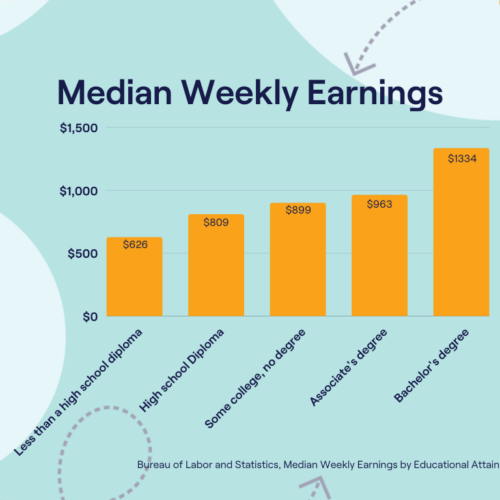Everyone is talking about it, but what is college, really?
Great question, let us give you some more information…
There are over 2,800 4-year colleges and university programs in the United States enrolling nearly 14 million students a year, and you can join them!
A 4-year program means that you are committing to completing 120 credit hours of study. Most colleges give 3 credit hours per class, so if you do the math, you will be completing 40 college classes in order to graduate.


Because the goal is to complete the 120 credit hours (not to be on campus for four years), some students are able to graduate from college in three-and-a-half years, while others go more slowly and take five or six years to complete their program. If you earn your Bachelor’s Degree, there’s no right or wrong way to do it.


Degrees given from 4-year colleges are called Bachelor’s Degrees – the most commonly held degree in the United States. They come in three types, based on the subject you study:
Bachelors of Arts (B.A)
(i.e. education, writing, law, criminal justice)
Bachelors of Science (B.S.)
(i.e. biology, psychology, pre-Med, engineering)
Bachelors of Fine Arts (B.F.A.)
(i.e., dance, drama, fashion design, visual arts)
Did you know, on average, Bachelor’s degree holders earn almost $20,000 more per year than those with a lesser degree and more than $35,000 per year than those with just a high school diploma? Over the course of your lifetime you could earn an additional $1 million dollars!


Now you have some key information about 4-year college programs that can help you make the best choice for your future. The next thing to do is to check out our Types of Majors resource page and keep learning about this process!




You stopped out of college, but now you’re ready to return. Here’s how to get started.
Read More